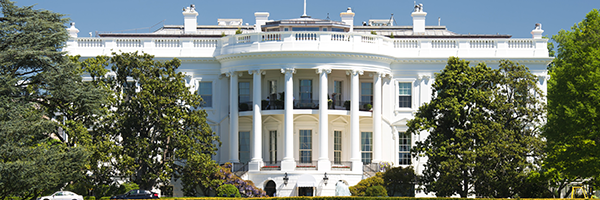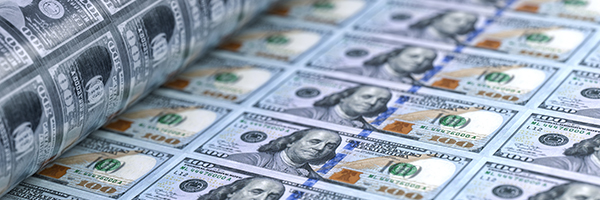
December 19, 2024 | Daily JAM, Morning Briefing |
It’s taken a while–what with the distraction of another potential government shut down. BUT IT’S ALL NOW AVAILABLE. You can find the complete version under the Special Reports tab.
December 19, 2024 | Daily JAM |
The plan, as of 5 p.m. Washington time, would fund the government until March 14 ad suspend the debt ceiling for 2 years. As of this moment a vote is scheduled for 6 p.m. Washington time tonight.

December 19, 2024 | Daily JAM |
In June 2023 after a bitter fight, Congress agreed to suspend the $31.4 trillion debt limit until January 1, 2025. Yep, January 1. Which means that even if Congress can fix the government spending crisis it created by its inability/unwillingness to pass a fiscal 2025 budget, we will’ move straight into a debt ceiling crisis. As with many Congressional deadlines, the January 1 date doesn’t mean quite what it seems.

December 19, 2024 | Daily JAM, Morning Briefing, Short Term |
It’s now not just that the MAGA wing of the Republican majority in the House of Representatives along with President-elect Donald Trump and who-elected-you co-president wanna be Elon Musk have killed the Continuing Resolution (CR) negotiated with Democrats by Republican Speaker Mike Johnson. That bill would have kept the government’s doors open beyond Saturday’s funding deadline until March 14, 2025. There’s no way to put together a new package and pass it before funding for the government expires. These folks have also made it extremely likely that the shutdown will last for more than a few days. How?

December 18, 2024 | Daily JAM, Short Term |
Late Tuesday House Speaker Mike Johnson introduced legislation to prevent a government shutdown this weekend by extending federal funding until March 14, sending $110.4 billion to natural disaster survivors, and codifying a miscellany of policy changes. But Republicans are preparing to scrap Johnson’s plan to avert a government shutdown.

December 18, 2024 | Daily JAM |
In today’s quarterly update to its projections on economic growth, inflation, and interested rates in its Dot Plot survey of sentiment, Fed officials and governors forecast fewer rate cuts for next year than in their September projections, and they saw the fight against inflation making considerably less progress in 2025. According to the median estimate, they now see the benchmark interest rate reaching a range of 3.75% to 4% by the end of 2025. That would mean just two 25 basis-point cuts. The Fed’s projections are considerably more pessimistic than investors or Wall Street economists are. A majority of economists surveyed by Bloomberg had expected the median estimate would point to three cuts next year.

December 18, 2024 | Daily JAM, Morning Briefing, Short Term |
Today, December 18, the Federal Reserve lowered its benchmark interest rate for a third consecutive time.The Open Market Committee voted 11-1 to cut the federal funds rate to a range of 4.25%-4.5%. Cleveland Fed President Beth Hammack voted against the action, preferring to hold rates steady.

December 17, 2024 | Daily JAM, Short Term, Videos |
Today’s Hot Money Moves NOW is U.S. Dollar. The dollar has been on a good run and is up 7% in the last three months, 2% in the last month. I expect this to continue with higher tariffs, and a Fed that will remain steady while other currencies are seeing more volatility. To get in on this you can buy an ETF like Invesco DB US Dollar Index (UUP), currently up 10.19% YTD with a 75 basis point expense ratio. Another option would be the WisdomTree Bloomberg U.S. Dollar Bullish Fund (USDU), up about 11% YTD with a 50 basis point expense ratio. WisdomTree buys Treasuries while Invesco uses futures but both are similarly sized ETFs and good ways to play the US dollar.

December 17, 2024 | Daily JAM, Morning Briefing |
Canada is looking at imposing taxes on major commodities it exports to the United States-—including uranium, oil and potash—if the incoming Trump Administration carries out a threat to impose 25% tariffs on Canadian exports.

December 17, 2024 | Daily JAM, Mid Term |
China’s retail sales growth unexpectedly weakened in November. Retail sales rose 3% from a year ago. That was the the slowest annual growth rate in three months and it was well below even the most bearish forecast.
Just last week Chinese policymakers elevated boosting consumption to the top priority for next year. That marked , only the second time in a decade that the consumer economy was the focus of official policy.

December 15, 2024 | AAPL, Daily JAM, MCD, Special Reports |
What you need as an investor and what your portfolio needs is a road map to the likely events of the beginning of this new administration. And a take on what those events are likely to mean for the financial markets–and the prices of stocks and bonds. And recommendations on what moves to make to respond to the events of the first 100 days of a Trump Administration. Which is what this Special Report is all about. Here /i’ll give you an investor’s calendar to the first 100 days of Trump; a run-down of the likely effects on the financial markets of the events in the first 100 days; and recommendations for moves that you should make with your portfolio.

December 14, 2024 | Daily JAM, Short Term |
When the Federal Reserve announces its latest interest rate move and it’s Dot Plot projections on future interest rates, inflation, and GDP growth, it will be the Dot Plot projections that matter to the financial markets.












